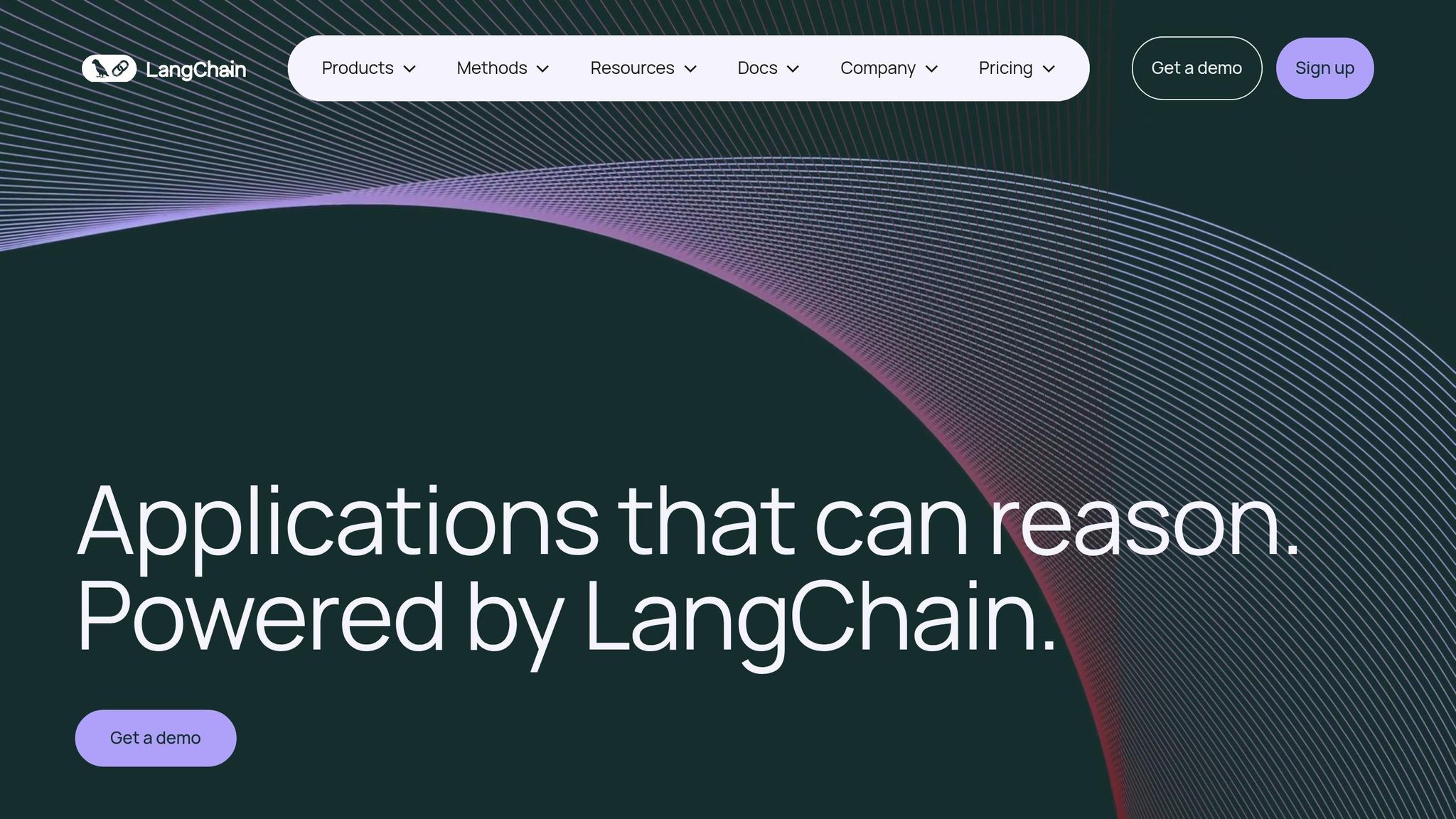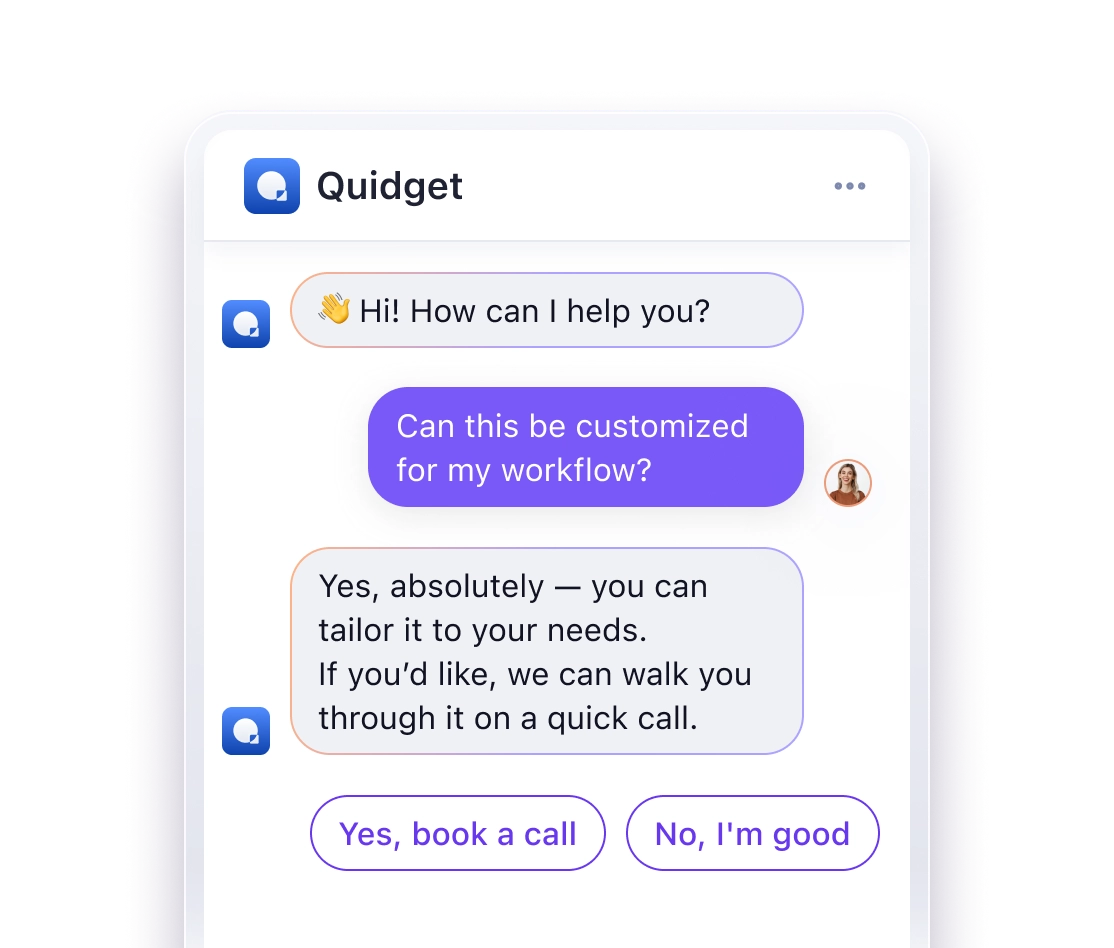How to Build an Open-Source Chatbot with RAG (Retrieval-Augmented Generation)
Want to build a chatbot that provides accurate, up-to-date answers? A Retrieval-Augmented Generation (RAG) chatbot combines data retrieval with AI to deliver context-aware responses. Unlike traditional chatbots, RAG pulls real-time information from databases or documents, ensuring reliable answers even with constantly changing data.
Key Steps to Build Your RAG Chatbot:
- Core Tools: Use Python, LangChain, and LlamaIndex.
- Components: Set up embedding models, vector stores (e.g., Pinecone or Chroma), and retrieval systems.
- AI Models: Choose open-source models like Mistral 7B or GPT4All for local deployment.
- Testing & Deployment: Optimize performance with metrics like accuracy and context relevancy. Deploy locally using Docker and minimal hardware.
Why RAG?
RAG improves chatbot performance by integrating external knowledge, reducing reliance on outdated training data. It’s practical, affordable, and easy to deploy on standard PCs.
Quick Tip: Start small with tools like GPT4All for testing, then scale up with Mistral 7B for production.
Ready to dive in? Let’s break it down step by step.
Related video from YouTube
What is RAG and How it Works
Before diving into chatbot development, it’s essential to understand how RAG (Retrieval-Augmented Generation) combines data retrieval with language generation to provide accurate, context-aware responses. Unlike traditional chatbots that rely only on pre-trained data, RAG actively searches for up-to-date information to deliver precise answers.
Core RAG Components
RAG works through two key steps:
- Data Retrieval: When a user submits a query, the system searches a designated database using vector search technology to find the most relevant information.
- Response Generation: Using the retrieved data, the model crafts a specific and informed response.
A practical setup for this architecture includes tools like:
- Langchain for managing RAG logic
- Chroma as the vector database
- FastAPI and LangServe for API endpoints
- Langfuse for monitoring system performance
Why RAG Benefits Chatbots
RAG improves chatbot accuracy by pulling specific context from a knowledge base, allowing the chatbot to reference precise documentation rather than relying on general training data.
For example, MyScale showcased how RAG can handle massive datasets, managing millions of users’ chat histories while maintaining SQL compatibility. This demonstrates how RAG can seamlessly integrate both structured and unstructured data.
Another advantage is resource efficiency. Chatbots can decide when retrieval is necessary, reducing unnecessary computational load.
This framework provides a solid foundation for building a RAG-powered chatbot step by step.
Building a RAG Chatbot: Step-by-Step Guide
Setup Requirements
To build a RAG chatbot, you’ll need the following:
- Core Tools: Python (3.8 or higher) and Git
- Key Libraries: Install LangChain and LlamaIndex using pip
- Vector Database: Choose between Pinecone or MongoDB
- API Access: Ensure you have the necessary API keys
LangChain offers several packages to streamline development:
| Package Name | Purpose | Features |
|---|---|---|
| langchain-core | Foundation | Core components |
| langchain-openai | OpenAI support | API integration |
| langchain-community | Third-party | Additional tools |
Selecting an Open-Source AI Model
The AI model you choose will directly impact your chatbot’s performance. Here’s a comparison of popular options:
| Model | Benefits | Best Use Case |
|---|---|---|
| Mistral | Low resource usage, strong output | General-purpose chatbots |
| Llama | Strong community support, customizable | Research and experimentation |
| LlamaEdge | Built-in RAG support, integrates with Qdrant | Production-ready deployments |
Once you’ve selected a model, you can start building the RAG system.
Building the RAG System
Follow these steps to create your RAG-powered chatbot:
1. Document Processing
Break your documents into smaller chunks, typically between 100 and 1,000 tokens. This makes it easier to manage and retrieve relevant data.
2. Embedding Creation
RAG combines large language models (LLMs) with retrieval systems to answer questions using up-to-date external information. Generate embeddings for your document chunks to enable this process.
3. Vector Store Setup
Set up a vector database to store and retrieve the embeddings efficiently. For example, LlamaEdge uses Qdrant for persistent storage.
Connecting RAG to Your Chatbot
Integrate RAG into your chatbot by handling user queries, retrieving relevant context, and generating responses. Here’s how it works:
- Query Processing: Convert user inputs into vector embeddings for better understanding.
- Context Retrieval: Use your vector database to fetch relevant information.
- Response Generation: Combine the retrieved context with your LLM to create a coherent response.
To improve response accuracy, consider these techniques:
- Use Hypothetical Document Embeddings (HyDE) for better retrieval precision.
- Apply metadata filtering to ensure the context matches the query.
- Implement reranking methods to address issues like the "lost in the middle" problem.
The LlamaEdge RAG chatbot showcases this integration by using the /v1/chat/completions endpoint for generating responses.
sbb-itb-58cc2bf
Top Tools for RAG Chatbot Development
This section highlights two important frameworks for building RAG chatbots and explores open-source models for local use.
LangChain and LlamaIndex: A Powerful Combination

LangChain and LlamaIndex each play specific roles in creating RAG chatbots. LangChain helps build complete workflows, while LlamaIndex focuses on managing and retrieving document data.
Key features to consider:
- LangChain: Offers data loaders to handle various data types.
- LlamaIndex: Excels at managing complex document structures.
- Integration: Both tools can be combined using Python APIs for seamless functionality.
Open-Source Models for Local Deployment
Selecting the right model depends on your project’s scope and available resources. Local deployment can lower resource usage while maintaining strong performance.
Here are some popular options:
- Mistral 7B: Optimized for local use.
- GPT4All: Ideal for quick testing and prototyping.
- Mixtral-Instruct-v0.1: Designed for generating detailed answers.
Implementation tips:
- Start with GPT4All for fast testing.
- Use Mistral 7B alongside Ollama runtime for efficient deployment.
- Evaluate the resource needs of each model before deciding.
Next, we’ll explore how to test your chatbot’s performance and deploy it effectively.
Testing and Deployment Guide
Performance Testing
When testing a RAG chatbot, the focus should be on evaluating response accuracy, how well it retrieves knowledge, and its ability to handle user interactions effectively.
RagaAI offers detailed metrics to assess chatbot performance:
| Metric | Description |
|---|---|
| Hallucination | Checks for false or unsupported details |
| Faithfulness | Measures alignment with source material |
| Response Correctness | Evaluates the accuracy of answers |
| Context Relevancy | Assesses if retrieved context is suitable |
| Context Precision | Examines the accuracy of selected context |
To enhance performance:
- Test how well the chatbot understands user intents with a range of common queries.
- Measure response times to ensure they meet user expectations.
- Verify that the chatbot retrieves and uses the correct context in its responses.
Once you’re satisfied with the performance, you can move on to local deployment.
Local Deployment Steps
Hardware Requirements:
- CPU: Minimum of 4 cores (x86 architecture)
- RAM: At least 16 GB
- Storage: 50 GB or more
- Docker: Version 24.0.0 or newer
To ensure Elasticsearch operates efficiently for document retrieval, adjust vm.max_map_count to 262144.
The Red Hat AI chatbot demo serves as a great example of local deployment. It integrates local LLMs with document retrieval systems to support OpenShift AI and Open Data Science documentation.
With hardware ready, follow these steps to configure your deployment:
- Use Docker Compose for consistency.
- Set up API keys for the LLM you’re using.
- Prepare your knowledge base with relevant content.
- Create a dedicated virtual environment for the deployment.
- Monitor resource usage to ensure smooth operation.
Next Steps
Now that your chatbot is up and running, here are some steps to keep it performing well and growing over time:
Keep Knowledge Up to Date
Regularly update your source documents and adjust retrieval settings. Tweaking chunk sizes and overlaps can make responses more accurate and relevant.
Boost Performance
Here are a few tips to improve your chatbot’s efficiency and effectiveness:
| Focus Area | How to Improve |
|---|---|
| Query Handling | Refine the query rewrite function to better address vague or unclear questions. |
| Cost Control | Switch between language models based on how complex the query is. |
| Response Speed | Use Streamlit caching to avoid regenerating embeddings unnecessarily. |
| Contextual Accuracy | Regularly evaluate and update your knowledge sources to maintain quality. |
Once you’ve optimized these areas, consider expanding your chatbot’s capabilities.
Take Development Further
Push your chatbot to the next level by integrating advanced tools and strategies:
- Incorporate LangChain or LlamaIndex to simplify development workflows.
- Test open-source models like Gemini or Fireworks to scale affordably.
- Analyze user interactions to pinpoint areas for improvement and refinement.
Looking for an Easier Option?
If you prefer a quicker setup, try Quidget‘s AI agent builder. It offers pre-built RAG functionality and works seamlessly across multiple platforms.



